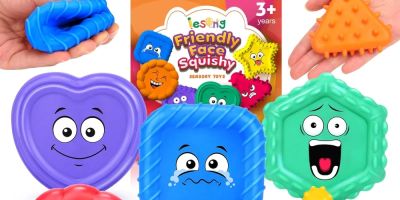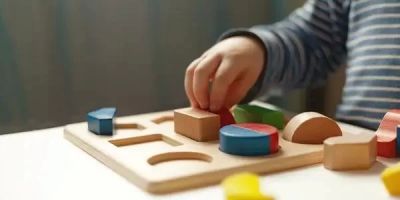- How-to-choose-the-right-toys-for-your-child
- Understanding-child-development-and-toy-selection
- Age-appropriateness-and-safety-considerations
- Encouraging-creativity-and-learning-through-toys
- Practical-tips-for-selecting-the-best-toys
- Real-life-examples-and-why-knight-toys-makes-a-difference
1. How to Choose the Right Toys for Your Child
Choosing the right toys for your child is an essential task that goes beyond just picking something colorful or trendy. The right toys contribute significantly to a child’s development, emotional growth, and creativity. Parents often wonder how to balance fun with educational value, safety, and suitability for their child’s age and interests. This guide dives into how to choose the right toys for your child by exploring developmental needs, safety factors, and how toys can encourage learning and imagination naturally.
1.1 The Importance of Thoughtful Toy Selection
Toys are more than playthings; they are tools for learning and discovery. Well-chosen toys stimulate cognitive skills, motor abilities, social interaction, and emotional expression. For example, simple building blocks teach spatial awareness and problem-solving, while role-playing toys encourage empathy and communication. Recognizing this transforms the way parents approach toy shopping and encourages a more mindful selection process.
2. Understanding Child Development and Toy Selection
To choose toys effectively, understanding child development stages is critical. Each age range comes with different physical, cognitive, and emotional milestones that toys can support.
2.1 Infant and Toddler Stage (0-3 Years)
At this stage, sensory exploration is key. Toys that stimulate touch, sight, and sound—like soft plush toys, rattles, and colorful stacking cups—help babies build essential sensory connections. Safety is paramount; toys should be free from small detachable parts to prevent choking hazards.
2.2 Preschool Stage (3-5 Years)
Preschoolers start developing language, motor skills, and imagination. Toys such as puzzles, art supplies, and simple board games promote these skills. Role-playing sets, like kitchen or doctor kits, encourage social skills and creativity.
2.3 School Age Stage (6 Years and Up)
Children gain complex reasoning abilities and physical coordination. Construction sets, science kits, and sports equipment challenge their problem-solving and teamwork skills, while books and educational electronic toys can enhance knowledge and curiosity.
3. Age Appropriateness and Safety Considerations
Choosing toys suitable for your child’s age is vital to ensure they are engaging without being frustrating or dangerous.
3.1 Checking Age Labels and Material Safety
Always look for age recommendations on packaging. Toys designed for older children might contain small parts or require skills that younger kids don’t yet have. Moreover, material safety—non-toxic plastics, sturdy construction, and smooth edges—reduces risks of injury.
3.2 Avoiding Common Hazards
Beware of toys with sharp edges, detachable magnets, or toxic paint. Many recalls in recent years have been due to such dangers. Investing time in research or purchasing from trusted sources like Knight Toys ensures higher safety standards.
4. Encouraging Creativity and Learning Through Toys
Toys that inspire creativity and learning offer lasting value beyond momentary amusement. Here’s how to identify and encourage these qualities:
4.1 Open-Ended Toys for Imaginative Play
Toys without fixed outcomes, such as blocks, clay, or dolls, let children invent their own stories and scenarios. This freedom supports flexible thinking and problem-solving skills.
4.2 Educational Toys that Blend Fun with Skill-Building
From STEM kits to musical instruments, educational toys promote specific skills while keeping play enjoyable. The key is balance: toys should challenge children just enough to keep them engaged without overwhelming them.
4.3 Real-Life Learning Through Role Play
Role-playing toys mimic everyday situations and professions, helping children understand the world and practice social roles. Parents can join in these activities to deepen the learning experience.
5. Practical Tips for Selecting the Best Toys
Here are some actionable strategies to make toy shopping easier and more effective:
5.1 Observe Your Child’s Interests and Personality
Choosing toys that align with your child’s passions, whether it’s dinosaurs, art, or sports, enhances engagement and enjoyment.
5.2 Prioritize Quality Over Quantity
Instead of buying many cheap toys, invest in fewer but higher-quality items that will last longer and provide richer play experiences.
5.3 Use Trusted Retailers and Brands
Purchasing from reputable stores, such as Knight Toys, helps guarantee the safety, quality, and developmental value of toys, avoiding counterfeit or poorly made products.
6. Real-Life Examples and Why Knight Toys Makes a Difference
Consider the story of Sarah, a mother of a curious three-year-old who struggled to find toys that could hold her child’s attention and support early learning. After exploring various options, she found Knight Toys, where knowledgeable staff recommended age-appropriate, safe, and educational toys tailored to her daughter’s interests. The difference was clear—her child became more engaged, creative, and confident during playtime.
Similarly, Knight Toys specializes in curating a selection that balances fun, safety, and educational value. Their products undergo rigorous checks, and expert advice is always available, giving parents peace of mind and children the best opportunities to grow through play.
Ultimately, selecting the right toys for your child is a thoughtful process that takes into account developmental stages, safety, creativity, and personal interests. Leveraging trusted sources like Knight Toys ensures a rewarding and enriching toy experience for both parents and children.





